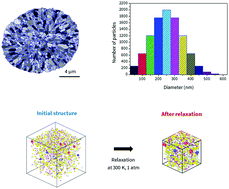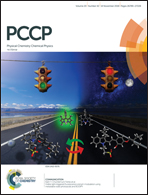Mechanistic understanding of intergranular cracking in NCM cathode material: mesoscale simulation with three-dimensional microstructure†
Abstract
Intergranular cracking in the agglomerated form of secondary particles has been regarded as a major cause for mechanical degradation in layered oxide cathode materials for Li-ion batteries, but its detailed mechanistic origin linked to the mechanical properties of these materials is still unknown. In this study, a mesoscale simulation based on the description of the interaction between primary particles is established by combining the model of the shifted-force Lennard-Jones potential and granular Hertzian model to construct the microstructure of secondary particles of cathode materials. The optimized parameters for each model are developed to compute the mechanical properties based on the response from nano-indentation and uniaxial tensile tests. Furthermore, the adhesion between the primary particles is modified to examine their sensitivity to different modes of deformations. The results show that under tension, an increase in adhesion can significantly strengthen the structure along with increase in brittleness, whereas the response from the localized compression (nano-indentation) is shown to be much less sensitive. In addition, the structural changes during repeated volume expansion/contraction induced from electrochemical cycling are investigated. The results indicate that enhancing particle adhesion can prevent the propagation of intergranular cracking.



 Please wait while we load your content...
Please wait while we load your content...